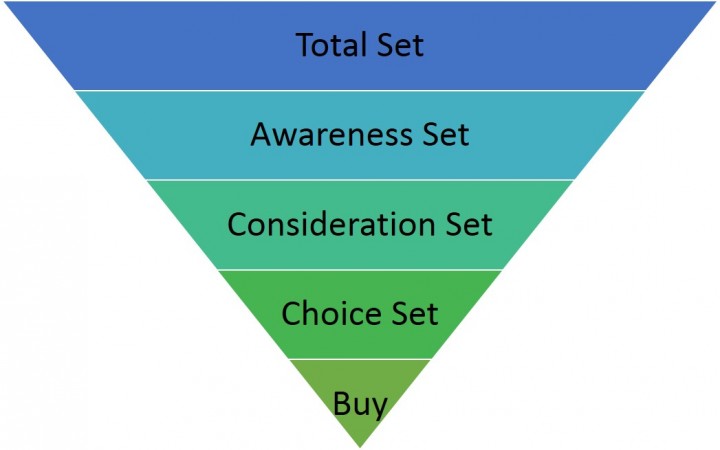Problem Recognition – This is how the entire buying process gets initiated. Customers or potential customers experience an unmet need, which might happen on account of an internal and/or external stimuli. The objective of the marketing department of an organization is not only to promote products but also making customers realize that they have a need for the organization’s product offerings. From the customer’s perspective, purchase might happen to obtain a new product or replenish an existing product. Advertising and other forms of marketing play a crucial role in this stage by influencing customers and getting them to desire to own those products. One point to be noted is that, the marketing communication might also trigger a latent (hidden) need which is a need that the customer never knew that he had, in the first place.
Information Search – There is a certain category of products which are called ‘search goods’, because people generally research and/or obtain information about them before deciding to purchase them – an example can be cars. This process is known as information search and it constitutes the second stage of this model. The major sources of information are – Personal (friends, family, etc.); Commercial (company websites, sales personnel, etc.); Public (product-rating websites, etc.); and Experiential (physical handling of the product, etc.). As a result of information search, a customer’s choice of brands to consider for purchase, goes on narrowing down. This can be depicted as follows:-
The onus is on the companies to ensure that the information that the customers come across regarding their product offerings is such that they remain in the sets as the customers go down the decision-making funnel.
Alternatives’ Evaluation – Once the customer has narrowed down his choices after doing information search, he would be evaluating the alternatives that remain, and hence, this constitutes the third stage of the consumer buying process. On a broader level, what basically drives the evaluation is how relevant the product is in satisfying the customer’s need and what exactly is the customer’s expectations from the product. Of course, there is a budget element involved, which might restrict his choices. Hence, the challenge for the companies is to hit that sweet optimal trade-off between price and quality so that it becomes very attractive to its buyers. There is a model called the ‘Expectancy-Value Model’ which many consumers employ to help them evaluate their choices, especially when the product is an expensive one. Here, the customers come out with parameters in the product that are important to them and then rate all competing products on those parameters. Once they do that, they are able to make a more quantified choice. But it must be noted that this is not the only method that can be considered and most customers have their own acid tests of evaluation.
Purchase Decision – Till now the customer had only been involved with the product that he intends to buy. Now, he starts considering the auxiliaries associated with the product – for example, when to buy, which dealer to buy it from, how much to buy, which method of payment to select, should the online channel be considered, etc. So far he has had a purchase ‘intention’ which must be converted to a purchase ‘decision’, if a sale has to be made, and hence, this constitutes the fourth stage of the model. Two of the most common factors that can impede/resist this conversion are – others’ perception about the product that he has chosen; and unforeseen circumstantial factors that could not have been taken into account earlier. The companies must engage in a quick customer lock-in if they do not want to lose out on customers and prospects at such a late stage of the buying process.
Post-purchase Behaviour – The final stage of the model is that of what happens once the purchase has been made, and unfortunately, this is the one that is neglected the most by the companies. Keeping the customer engaged and involved in a positive manner once the sale has happened, is of utmost importance to ensure that he is retained and becomes a pseudo-ambassador of the product/brand. Some of the activities that the organization can indulge in are – providing after-sales service; educating customers regarding the use of the product; informing customers when they need to dispose of their product; helping customers upgrade to the next level, etc.
This model, just like any other marketing model/framework, is not a comprehensive one, and cannot be applied to every situation or every product. Also, it might happen that all the stages of the model do not apply for a certain product. Hence, an intelligent marketer would not try to force-fit this model everywhere, but use it as a guiding tool to better understand how customers buy a product. In conclusion, I would like to point out that customers are mere humans and their psychology, at times, becomes difficult to comprehend. Many times they make irrational or impulsive choices which are beyond any marketing model in the world. Hence, the five-stage customer buying process model is a nice way to approach towards understanding consumer buying behaviour.
Reference: ‘Marketing Management – a South Asian perspective’ (14th Edition) by Philip Kotler, Kevin Lane Keller, Abraham Koshy, Mithileshwar Jha











Comments